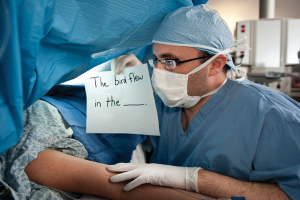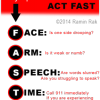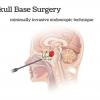Hi all, Ramin Rak here with the latest news about a medical procedure I perform called awake craniotomy.
At Neurological Surgery, P.C. in Long Island, New York, I am one of the leading neurosurgeons performing this procedure. When I conduct an awake craniotomy, I work alongside a team of skilled physicians to operate some of today’s most advanced neuro-navigational technology. My expertise in micro-neurosurgical techniques has allowed me to successfully establish awake craniotomy programs in multiple hospitals around the Long Island area.
Awake craniotomy is a procedure in which patients remain awake during brain tumor surgery in order to determine whether the operation will affect specific areas of the brain that control speech, vision, and movement.
Once I identify a patient as a good candidate for an awake craniotomy, I work with the specialized team at Neurological Surgery, P.C. to establish a baseline of cognitive function and precisely pinpoint the tumor’s location. The specialized team is composed of neurophysiologists (who monitor the brain’s electrical impulses), nurses, and physicians assistants to ensure everything runs smoothly. Before operating on a patient, I use a unique mapping approach to map the brain’s gray matter and nerve fibers within the white matter. Mapping techniques have helped determine where the most brain damage potential lies, allowing me to protect the patient’s ability to speak, move, and see.
Thanks to functional brain imaging (functional MRI) and other neurological technologies, I can perform awake craniotomies on patients whose tumors were previously thought to be inoperable.
A functional MRI scan is especially important because it identifies functional areas of the brain that are impacted by the tumors. Over the past couple of years, neuronavigation and new types of anesthesia have also made the procedure safer and easier to conduct. The most reassuring aspect that relieves my patients is when I tell them that they will not feel pain when they are either awake or sedated during an awake craniotomy.
For further information about awake craniotomy, read my full press release here: http://www.prweb.com/releases/2013/2/prweb10445390.htm or learn about other procedures I perform by reading my blog.
Thanks for reading,
Ramin Rak



